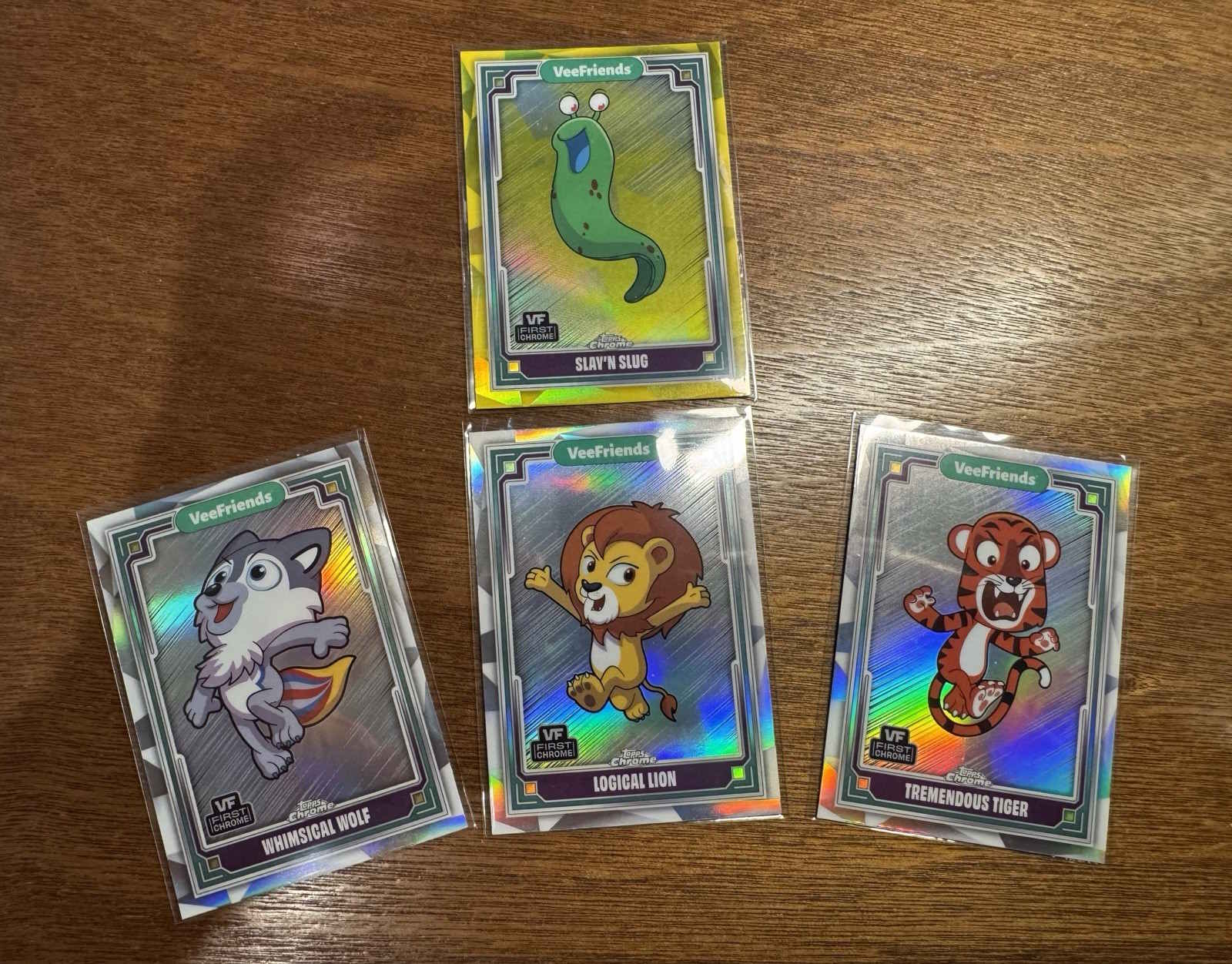

When it comes to collecting, perhaps nothing is worse than buying a card that you believe to be authentic, only to learn it has been fake. Whether you’ve been scammed by the seller or somebody from earlier in the reprint’s life, it can cost you thousands of dollars.
Today, we’re going to look at the top ten most frequently faked sports cards.
Many people have “reprinted” these cards because of their significance, but often the reprint is not marked as such. Sadly, that means it is up to the collector to decide what’s real and what’s not, and getting it wrong can be a very, very expensive mistake.
To prevent that, we’ve put together a useful guide to help make sure that never happens to you. We’re also ending this list with our best tips for buying any vintage cards to ensure you don’t get scammed, so keep reading until the end.
With that said, here’s our list, in no particular order.
The Honus Wagner T206 is one of the most iconic baseball cards in history. Due to its rarity and value, it has become a prime target for counterfeiters. When evaluating its authenticity, pay close attention to the card’s corners, edges, and cardstock.
The T206 cards are printed on thin, off-white cardstock and you can see light through them if you hold them up to the light. Also, the white border on the front of the cards are lighter than the white on the back.
Shop for Honus Wagner T206 cards and reprints on eBay

Mickey Mantle’s 1952 Topps card is one of the holy grails, which makes it a frequent counterfeit. Many of the fake versions of this card can be identified by examining the card’s color saturation, the clarity of the image, and the borders’ thickness.
The printing of the ink is important, too: On a real Mantle, the ink should be solid in the yellow behind the stars, the black for the borders of the stars, the black for Mickey Mantle’s name and signature, and the actual borders of the card, instead of half-tone.

The Michael Jordan 1986-87 Fleer rookie card is considered the holy grail of basketball cards. Due to its value, counterfeit versions flood the market.
Key traits to check include the card’s glossiness, the Fleer logo, the Bulls logo, and the print of the border — the black line should be solid and not dotted. We took a deep dive on this card in our full guide, right here.

The Wayne Gretzky 1979-80 O-Pee-Chee rookie card attracts counterfeiters. One of the easiest tells on this one is actually a mistake in the printing: the original has a yellow dot on Gretzky’s shoulder.
Many of the fakes (but not all), do not. The original cards are usually not very clean-cut on the edges, either. This is because the old style of cutting card sheets with a metal wire, which would wear out over time and cut less clean.
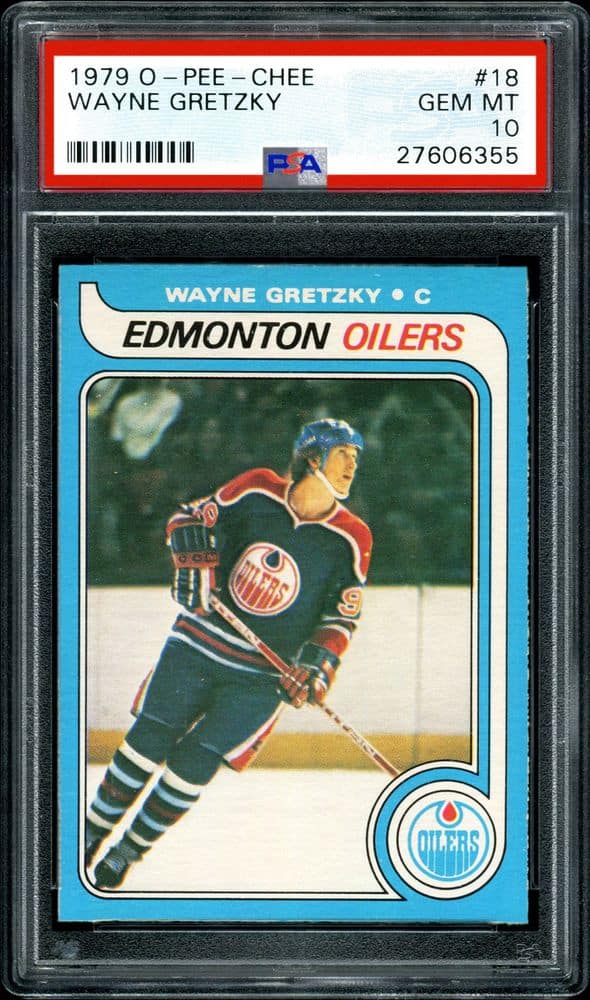
The Babe Ruth 1914 Baltimore News card is notorious for its rarity and susceptibility to forgery. When checking out these cards, the color, border, and ink are often the tells.
They’re also over a 100-years-old, meaning that people artificially age the reprints, and that will usually be enough to at least let you know something is off.
Trust your gut. Also, check out the dot pattern of the ink on the Ruth. Reprints/counterfeits are usually made via taking a picture of a real card and producing a printing plate from that, but that produces a random dot pattern.
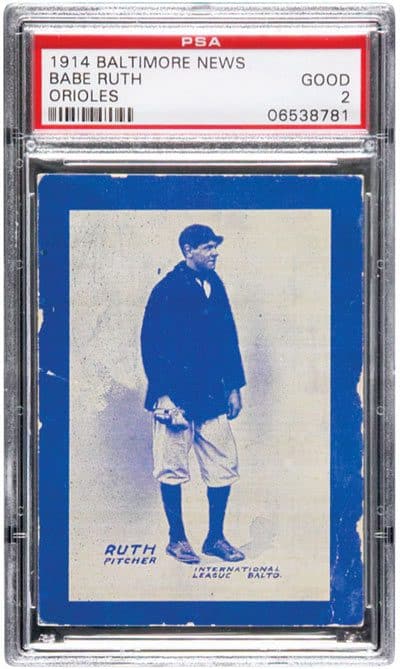
LeBron James’ 2003-04 Topps rookie card might not be as high-dollar as some of the cards on this list, but it’s still a popular card for faking. One of the common mistakes on most of the fakes is that they’re glossy, while the actual 2003-04 set was not.
Also, make of the fakes have the silver foil printed as part of the image and not as a separate silver foil layer, as it was on the actual rookie. It cost more to do foil on only certain portions of the print, particularly the high-detail areas with fine lines. Counterfeiters are often looking to save a dime.
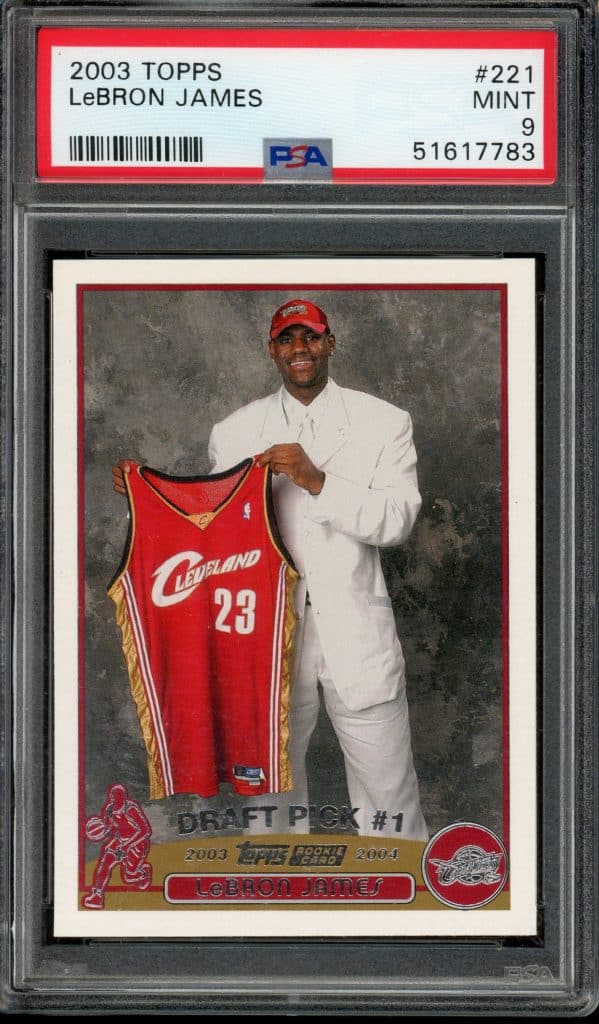
The Pele 1958 Alifabolaget card was the first million-dollar soccer card. The genuine cards will have vibrant colors, crisp details, and smooth surfaces and should have a smoother image because of the printing style.
The fakes, however, will typically show more dots in the printing if you look really closely. This card is subject to trimming, too, because it’s already an irregular size, so it might actually be a good thing to see white/chipping around the borders.
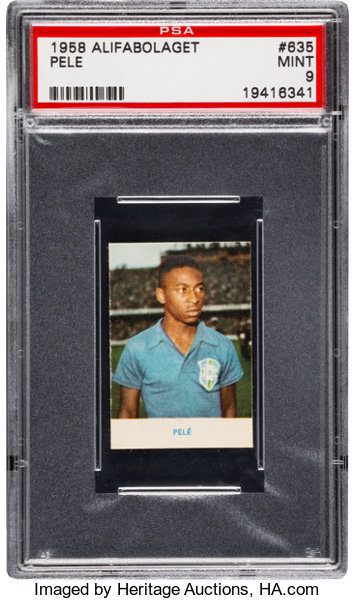
The Joe Namath 1965 Topps rookie card is a valuable piece, prone to forgery attempts. The coloring is usually a giveaway on these. Fakers seem to think that the yellow background fades over time, so the fakes are often a washed-out yellow, but in reality, all the rookie cards have a very vibrant, crisp yellow background.
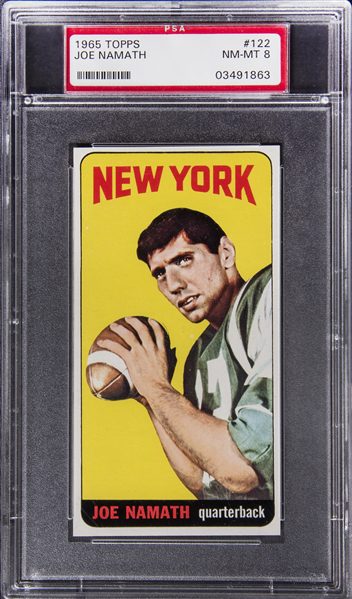
Wilt Chamberlain’s 1961 Fleer rookie card is a highly sought-after basketball collectible card… and a highly faked one. The real card was printed on an off-white cardstock, so make sure the card in question isn’t too white. The red background is important, too. It should be solid and more vibrant, while many of the reprints look a bit patchy in colors.
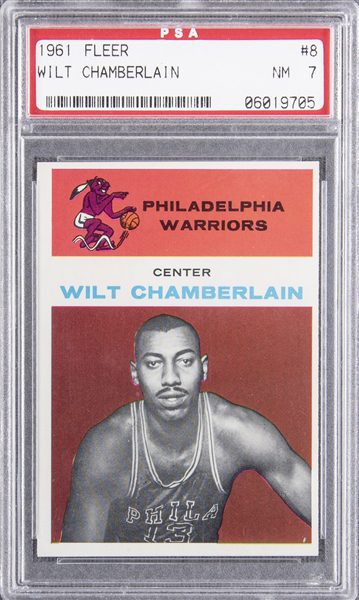
Roberto Clemente’s 1955 Topps card is the final card we’re spotlighting as a fake, and these were reprinted by Topps in the 1990s, too, so there are a lot of actual reprints floating around. When checking out these cards, be sure the card in question is not glossy, and the color printing in the background needs to be consistent.

Want to make sure you don’t end up on the wrong end of a bad sports card deal? Here are three tips to remember.
The most certain way to acquire a legit rookie card from this list is to bite the bullet and pay the hefty price of a BGS or PSA-graded one with hopes that, over time, the value will still continue to climb.
Cards graded by these companies are backed by them, and while there have been a few red flags over time, buying graded BGS or PSA cards is the safest approach.
You can always buy a low-cost option of a less-popular player/card from the set in question and use that as a benchmark for color, printing, borders, logos, and everything else. If possible, get a player from the same team so you can check logos and colors, too.
For other cards, a black light can easily highlight (literally) a fake. It wasn’t until the mid-1940s that brighteners were added to paper, and those brighteners will fluoresce under a black light. So, if you’re examining a card that’s pre-1940s and it glows under the black light, then it’s fake or altered — a stay away either way.
As the popularity and value of sports cards continue to grow, so does the risk of encountering counterfeit versions. To protect yourself as a collector, it is crucial to familiarize yourself with the top ten most frequently faked sports cards and the traits that can help determine their authenticity.
Keep these cards in mind and, if you happen to find them raw in the wild, exercise caution before making a purchase. Remember that a deal that seems too good to be true is usually exactly that.
Proceed with caution in every situation, and note that this is not investment advice. No matter what you decide to do, always be smart and cautious with major purchases like this, and as always, have fun with the hunt!
Is GameStop buying PSA? (the truth!)
I ripped an entire case of Phoenix Football (BIG win or MASSIVE loss?)
Make an extra 30% PROFIT on eBay with this sports card hack
What's your biggest trading card regret? This is a safe space. 🤣
I used ChatGPT to invest in sports cards (and make this thumbnail lol)
Easy hack for buying Tyrese Haliburton rookies at a DISCOUNT.
Did PSA Just Change Everything For Card Collectors?
Top Manchester United trading cards

BCW Thick Card Toploaders 197 Pt. 10 per pack
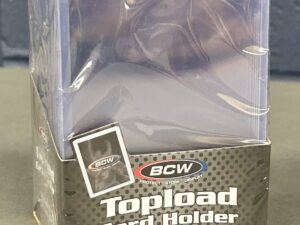
BCW Thick Card 59 Pt. Toploaders. 25 per pack

BCW 20 Pt. Toploaders. 25 per pack
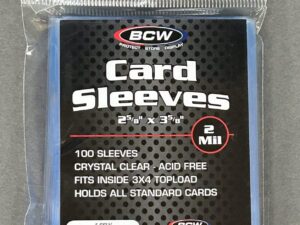
BCW Standard Card Sleeves. 100 per pack
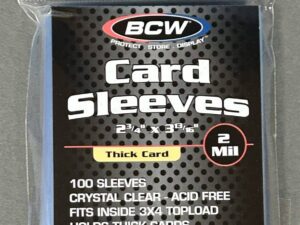
BCW Thick Card Sleeves. 100 per pack

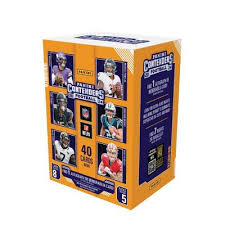
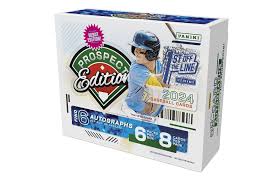
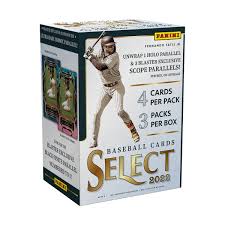
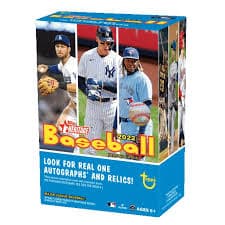
2022 Topps Heritage Baseball Blaster Box Configuration: 7 Packs per Box – 9 Cards per Box. Plus 1 extra pack.
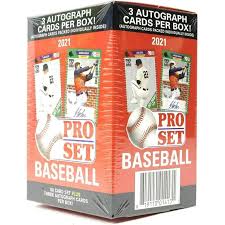
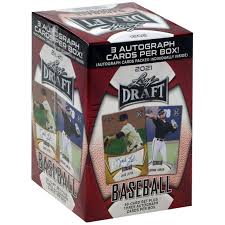
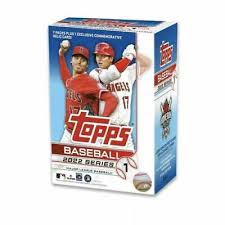
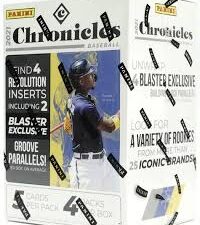
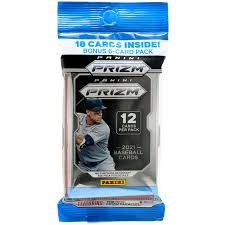
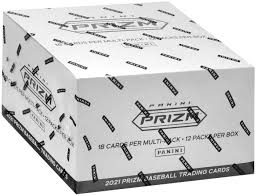

© Copyright 2025 - All rights reserved Cardlines.com / Media Techs LLC - Sports Card News, Reviews, Releases and BREAKS - #thehobby.
Important: When you click on links to various merchants on this site and make a purchase, this can result in this site earning a commission. Affiliate programs and affiliations include, but are not limited to, the eBay Partner Network.
I compared sports card prices from the big sellers to save YOU money
Cardlines June 16, 2025 5:00 pm